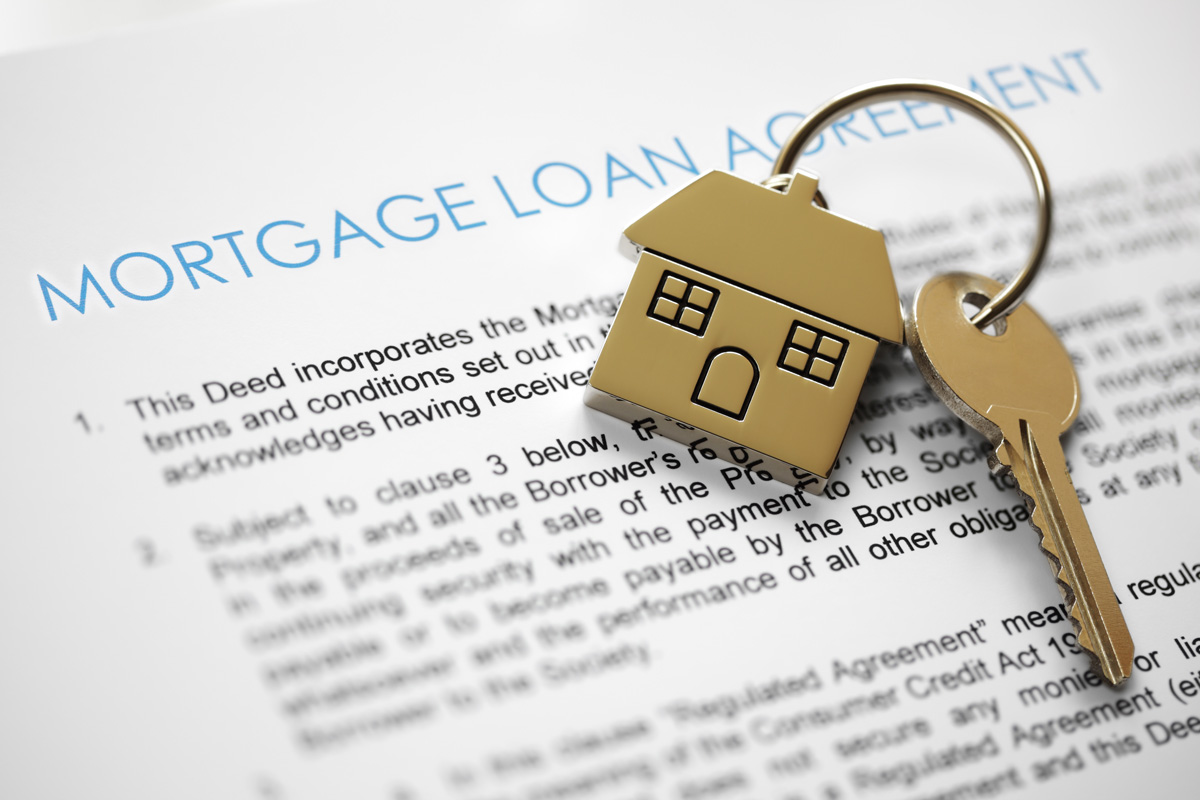Why Conventional Mortgage Loans Are a Smart Choice for Stable Funding
Why Conventional Mortgage Loans Are a Smart Choice for Stable Funding
Blog Article
The Crucial Aspects to Consider When Picking In Between Fixed-Rate and Variable-rate Mortgage Finances
When evaluating home loan alternatives, borrowers encounter a pivotal choice in between adjustable-rate and fixed-rate lendings, each providing possible challenges and distinctive advantages. Key considerations such as rates of interest stability, predictability in regular monthly repayments, and the effects of possible price changes can significantly impact long-term financial health. Recognizing the anticipated duration of homeownership and the overall price of loaning can form one's technique. As these aspects intertwine with individual financial scenarios and take the chance of resistance, the ramifications of this option may not be as straightforward as they appear. What subtleties should be prioritized in this crucial decision-making process?
Rate Of Interest Security
When picking a home loan, recognizing interest rate security is critical for informed decision-making. Rate of interest prices can considerably influence the general cost of a mortgage, and recognizing the nature of these rates is necessary for consumers.
On the various other hand, variable-rate mortgages (ARMs) begin with lower preliminary rates that may alter regularly based upon market problems. While this can lead to reduced repayments originally, it likewise introduces unpredictability, as customers may face increased settlements if rate of interest rise. For those taking into consideration an ARM, it is vital to analyze the possibility of price adjustments, the possibility for settlement increases, and the size of the first fixed-rate period.
Inevitably, the selection in between adjustable-rate and fixed-rate mortgages rests on individual danger resistance and economic scenarios. Understanding rate of interest stability assists consumers make informed decisions that line up with their long-lasting economic objectives.
Month-to-month Settlement Predictability
While consumers frequently focus on rates of interest security, the predictability of monthly settlements is equally vital in the mortgage selection process (Conventional mortgage loans). Month-to-month settlement predictability plays a crucial function in budgeting and economic planning, as it directly influences a house owner's money flow and total monetary health
Fixed-rate mortgages supply a consistent month-to-month settlement throughout the life of the financing, allowing customers to prepare for and prepare their expenses successfully. This security can be particularly helpful for newbie homebuyers or those on a set income, as it eliminates the uncertainty connected with rising and fall repayments.
Conversely, variable-rate mortgages (ARMs) commonly include reduced initial payments that can change with time, causing prospective irregularity in regular monthly commitments. While initially enticing, this unpredictability can make complex monetary preparation, specifically if borrowers do not make up future price adjustments.
Possible Price Modifications
In the realm of adjustable-rate home loans (ARMs), possible price adjustments represent a substantial factor that debtors have to very carefully consider. Unlike fixed-rate mortgages, where the rates of interest stays the same for the life of the finance, ARMs are characterized by fluctuating passion prices that are tied to market indices. This irregularity can cause considerable changes in month-to-month repayments, affecting the borrower's financial preparation and budgeting.
Consumers have to be conscious of the margin and index used to determine these modifications, as they straight influence future passion rates. Furthermore, ARMs typically include caps that restrict how a lot the passion price can raise at each change and over the life of the lending, which can provide some degree of security against radical price walks.
Understanding these possible changes is essential for debtors, as they straight influence long-term payment obligations. For that reason, assessing individual monetary circumstances and run the risk of resistance is important when making a decision whether an ARM straightens with one's economic objectives.
Lending Term Considerations
Loan term factors you can try here to consider play a critical duty in the decision-making process for debtors selecting between adjustable-rate and fixed-rate mortgages. The length of the funding term significantly influences regular monthly settlements, rate of interest, and total monetary preparation. why not try this out Fixed-rate home loans usually supply regards to 15 to thirty years, offering stability in regular monthly payments and predictability in budgeting. This can be particularly appealing for debtors who plan to remain in the same home long-lasting and prefer the assurance of fixed repayments throughout the life of the car loan.

Ultimately, borrowers need to assess their individual circumstances, financial goals, and market problems when evaluating the effects of loan term options within each mortgage kind.

Total Expense of Borrowing
Fixed-rate mortgages use foreseeable monthly settlements, as the passion rate remains consistent throughout the car loan term. This predictability can lead to lower overall expenses, specifically in a stable or declining interest my blog price environment.
On the other hand, adjustable-rate mortgages (ARMs) normally begin with lower preliminary rates, resulting in minimized upfront costs. These rates can increase after a first duration, leading to possibly higher long-lasting expenses. Borrowers have to think about the frequency and extent of rate modifications, in addition to the total finance period, to precisely analyze the economic ramifications.
In addition, the overall price of loaning encompasses not only rate of interest yet also costs and other associated expenses, such as closing expenses and insurance policy (Conventional mortgage loans). Therefore, when assessing home mortgage options, customers must carry out a comprehensive expense evaluation over the life of the loan. By doing so, they can make an educated decision that lines up with their economic goals and take the chance of tolerance
Final Thought
Interest price security and month-to-month repayment predictability are extremely important for efficient budgeting, while the capacity for price changes in ARMs presents monetary unpredictability. Additionally, the awaited duration of homeownership and the total price of loaning, consisting of rate of interest prices and linked charges, need to align with specific monetary circumstances and take the chance of resistance.
Key considerations such as rate of interest price security, predictability in month-to-month repayments, and the implications of possible rate changes can considerably impact lasting monetary health and wellness. Passion rates can considerably affect the general price of a mortgage, and acknowledging the nature of these prices is crucial for consumers. Unlike fixed-rate mortgages, where the interest price remains the same for the life of the lending, ARMs are identified by changing passion prices that are linked to market indices. Furthermore, ARMs frequently include caps that restrict just how a lot the interest rate can boost at each modification and over the life of the financing, which can offer some level of security versus radical price walkings.
Rate of interest price stability and month-to-month repayment predictability are critical for effective budgeting, while the capacity for price changes in ARMs introduces economic unpredictability.
Report this page